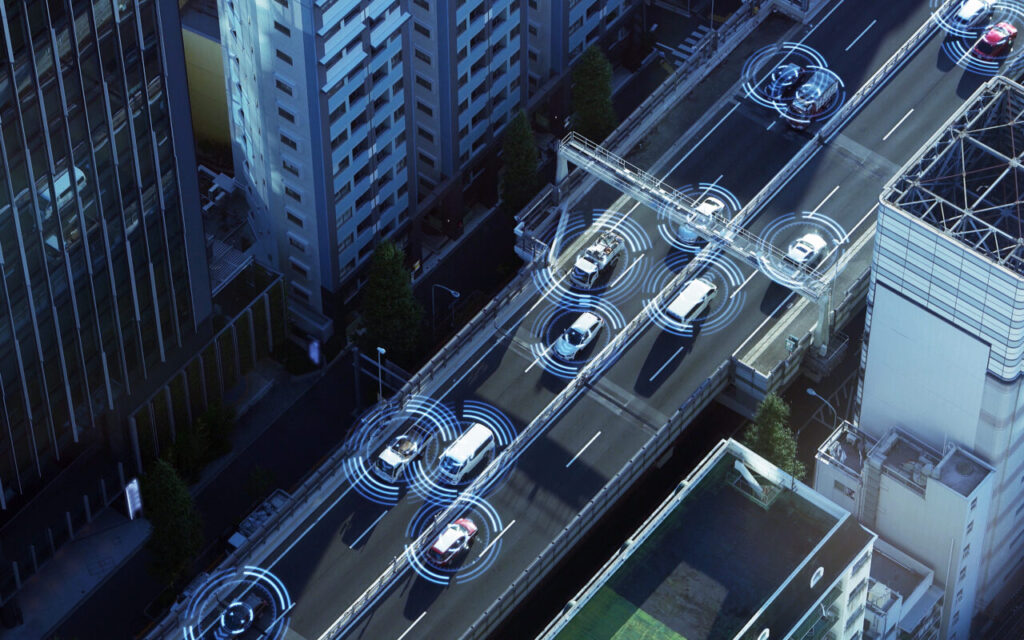The advent of autonomous vehicles (AVs) is set to revolutionize urban mobility, reshaping the way we navigate our cities. As technology advances, self-driving cars promise to enhance transportation efficiency, reduce traffic congestion, and improve overall safety on the roads. This transformation is not just about convenience; it encompasses a broader vision of sustainable urban living, where smart transportation solutions play a pivotal role in our daily lives.
In this article, we will delve into the various ways autonomous vehicles will impact urban environments. From reducing the need for personal car ownership to optimizing public transportation systems, AVs are poised to create a more interconnected and accessible urban landscape. We will also explore the potential challenges and considerations that come with this technological shift, including regulatory frameworks and ethical implications.
Furthermore, we will examine real-world examples of cities that are already integrating autonomous vehicles into their transportation networks, showcasing innovative pilot programs and partnerships. By understanding these developments, readers will gain insights into the future of urban mobility and how they can adapt to these changes. Join us as we embark on this journey to discover the transformative power of autonomous vehicles in shaping the cities of tomorrow.
As urban areas continue to grow, the need for efficient and sustainable transportation solutions becomes increasingly critical. Autonomous vehicles (AVs) are poised to revolutionize urban mobility by offering innovative solutions to longstanding challenges. This article explores various aspects of how AVs will transform urban transportation.
Enhanced Traffic Management
One of the most significant impacts of autonomous vehicles on urban mobility is their potential to enhance traffic management. AVs can communicate with each other and with traffic infrastructure, allowing for real-time data sharing and improved traffic flow. This connectivity can lead to reduced congestion, shorter travel times, and a more efficient use of road space.
Moreover, with the integration of smart traffic signals and adaptive traffic management systems, AVs can optimize their routes based on current traffic conditions. This not only benefits individual drivers but also contributes to a more organized urban environment, reducing the overall stress on city infrastructure.
Reduction in Accidents and Improved Safety
Safety is a paramount concern in urban mobility, and autonomous vehicles have the potential to significantly reduce accidents caused by human error. With advanced sensors, cameras, and artificial intelligence, AVs can detect and respond to hazards more quickly than human drivers. This capability can lead to a decrease in traffic fatalities and injuries, making cities safer for all road users.
Furthermore, as AV technology continues to evolve, the implementation of rigorous safety standards and regulations will ensure that these vehicles operate under optimal conditions. The result will be a safer urban environment, encouraging more people to use public transportation and other sustainable mobility options.
Increased Accessibility for All
Autonomous vehicles can greatly enhance accessibility for individuals with disabilities, the elderly, and those without access to traditional transportation options. By providing on-demand mobility solutions, AVs can bridge the gap for underserved populations, ensuring that everyone has access to essential services and opportunities.
Additionally, the integration of AVs into public transportation systems can create a more inclusive urban mobility landscape. For instance, AV shuttles can serve as first-mile/last-mile solutions, connecting users to public transit hubs and reducing reliance on personal vehicles.
Environmental Benefits and Sustainability
As cities strive to reduce their carbon footprints, autonomous vehicles can play a crucial role in promoting sustainability. Many AVs are designed to be electric, which can significantly lower greenhouse gas emissions compared to traditional gasoline-powered vehicles. Furthermore, the optimized driving patterns of AVs can lead to reduced energy consumption.
By decreasing the number of vehicles on the road through shared AV services, cities can also reduce traffic congestion and improve air quality. This shift towards sustainable urban mobility aligns with global efforts to combat climate change and create healthier urban environments.
Changes in Urban Infrastructure
The widespread adoption of autonomous vehicles will necessitate changes in urban infrastructure. Cities may need to redesign roadways, parking facilities, and traffic management systems to accommodate AVs. For example, dedicated lanes for AVs could improve traffic flow and safety.
Moreover, the reduction in parking demand due to shared AV services may allow cities to repurpose parking spaces for green areas, pedestrian pathways, and other community-focused developments. This transformation can enhance the overall quality of urban life and promote a more pedestrian-friendly environment.
Economic Impacts and Job Transformation
The rise of autonomous vehicles will have significant economic implications for urban areas. While AVs may lead to job displacement in certain sectors, such as driving, they will also create new opportunities in technology, maintenance, and infrastructure development. The demand for skilled workers in these fields is expected to grow as AV technology advances.
Additionally, the cost savings associated with reduced accidents and improved traffic efficiency can lead to lower transportation costs for consumers and businesses alike. This economic shift can stimulate local economies and encourage investment in innovative transportation solutions.
Public Perception and Acceptance
For autonomous vehicles to successfully transform urban mobility, public perception and acceptance are crucial. Many individuals may have concerns about the safety and reliability of AVs, which can hinder their adoption. Education and outreach efforts will be essential in addressing these concerns and building trust in AV technology.
Furthermore, involving communities in the planning and implementation of AV services can foster a sense of ownership and acceptance. By demonstrating the benefits of AVs through pilot programs and real-world applications, cities can encourage public support and facilitate a smoother transition to autonomous mobility.
The Future of Urban Mobility
As we look to the future, the integration of autonomous vehicles into urban mobility systems will likely lead to a paradigm shift in how we navigate cities. The combination of AV technology with other innovations, such as smart city initiatives and multimodal transportation options, will create a more interconnected and efficient urban landscape.
Ultimately, the successful transformation of urban mobility through autonomous vehicles will depend on collaboration among stakeholders, including government agencies, private companies, and the public. By working together, we can create a future where urban transportation is safer, more accessible, and environmentally sustainable.
| Aspect | Description |
|---|---|
| Definition | Autonomous vehicles (AVs) are self-driving cars that use technology to navigate without human intervention. |
| Impact on Traffic | AVs are expected to reduce traffic congestion by optimizing driving patterns and reducing accidents. |
| Environmental Benefits | With improved fuel efficiency and the potential for electric vehicles, AVs can lower greenhouse gas emissions. |
| Accessibility | AVs can provide mobility solutions for individuals unable to drive, such as the elderly and disabled. |
| Urban Planning | As AVs become prevalent, cities may redesign infrastructure, reducing the need for parking spaces and expanding green areas. |
| Public Transportation | AVs can enhance public transport systems by providing last-mile connectivity and reducing operational costs. |
| Safety | AVs have the potential to significantly decrease road accidents caused by human error, improving overall road safety. |
| Economic Impact | The rise of AVs could create new job opportunities in tech and infrastructure while disrupting traditional driving jobs. |
| Challenges | Regulatory, ethical, and technological challenges must be addressed to ensure the safe integration of AVs into urban environments. |



